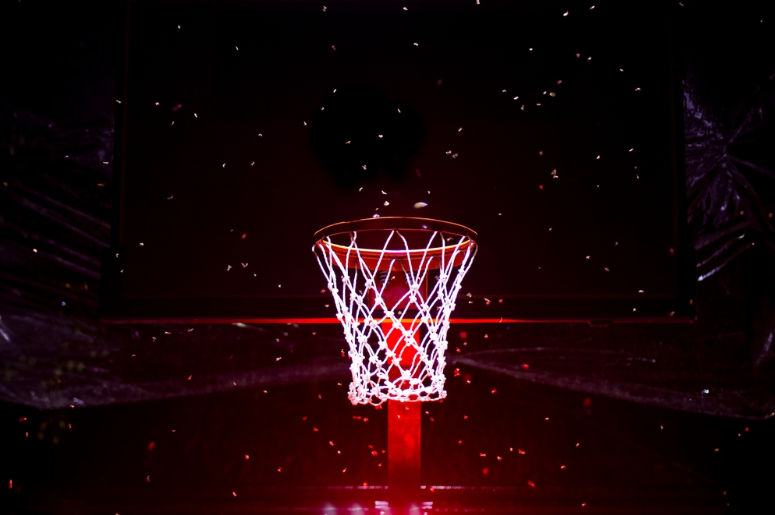
How the NBA became basketball’s global powerhouse

Everybody knows about the NBA. Whether it’s from family and friends or the highlights featured in the media, the league is everywhere. However, before the NBA reached its global fame, it had to start from the ground. From hard times to the top of the game, here’s how the NBA took over the basketball world.
Establishing the foundation
As basketball became more known in America, they yearned for a proper league that would help athletes showcase their skills. In the early years, basketball wasn’t as popular as baseball or boxing, and many teams struggled to attract fans.
Because of this, the Basketball Association of America (BAA) was established in 1946. Before BAA existed, the National Basketball League was founded in 1939 for players who wanted to pursue basketball as a professional career.
Internet, social media, and basketball betting live websites didn’t exist back then, so getting attention from people around the world was almost impossible. They had to lay the foundation themselves.
On August 3, 1949, the two organisations became the National Basketball Association (NBA). With this, they envisioned creating a better structure for basketball leagues and competitions.
Fighting for survival
Basketball wasn’t seen as a major sport in the 1950s, as the collegiate level was more popular. People didn’t take professional basketball seriously and viewed it as a sport only students would enjoy.
The introduction of the shot clock in 1954 helped make the game faster and more exciting, but the league still lacked mainstream appeal.
Popularity as a professional sport may be a problem, but the bigger obstacle for the NBA is racism. Initially, the NBA was a whites-only league, preventing other athletes from joining. In 1950, the first African-American players—Earl Lloyd, Chuck Cooper, and Nat Clifton—broke the system and allowed more players to be part of the NBA.
Even though these people played a major role in changing the system, racism was still an issue. African-American players were often treated unfairly and had limited opportunities compared to white players.
By the 1960s, stars like Bill Russell, Wilt Chamberlain, and Oscar Robertson helped change perceptions and prove that African-American athletes could also dominate the sport. They proved that skill makes the sport better, not skin colour.
Despite gaining bits of fame, many NBA teams still struggled financially, with some even folding or relocating.
The Magic vs. Bird era
The NBA struggled in the late 1970s—attendance was low, TV ratings were poor, and the league had a bad reputation. Many believed it was full of drug use and lacked excitement. Two players arrived and completely changed the game: Magic Johnson and Larry Bird.
Magic Johnson was a point guard player for Michigan State University for two years from 1977 to 1979, and Larry Bird was a small forward/power forward for Indiana State University from 1975 to 1979.
The two first encountered each other in the 1979 National Collegiate Athletic Association, where the two faced off and became rivals. Magic and Bird had contrasting styles that made them the perfect rivals. Magic’s flashy, fun-loving approach to the sport gave him the charm of a hearty player, while Bird’s hard-nosed, no-nonsense attitude became his appealing point.
Their first match against each other was the most-watched college basketball game in history, with Magic’s team winning 75-64. This match became the stepping stone for the NBA as the two signed contracts for NBA teams—Magic Johnson became part of the Los Angeles Lakers while the Boston Celtics approached Larry Bird. This set up a legendary East vs. West rivalry between two of the most historic franchises in basketball.
From then, the NBA slowly stood back up and was saved by the rivalry between two legendary players.
The Michael Jordan Effect
After the rivalry between Magic Johnson and Larry Bird took off, the NBA is now earning enough and has gained popularity not just in America but in some parts of the world. This credit goes to the legendary rivalry, but the biggest star is about to arrive.
Michael Jordan entered the NBA in 1984 as part of the team Chicago Bulls. The Bulls joined the NBA as an expansion team in 1966 and were considered one of the least relevant teams. They were not a popular choice for a lot of people back then.
They had some early playoff appearances in the 1970s but never made it past the conference finals, and they were known to have more empty seats than winning basketball games. A famous joke about the team is, ‘You could buy a Bulls ticket and sit wherever you wanted.’
This all changed when Michael Jordan stepped on the court. He immediately became the team’s best player, leading them to the playoffs. His highlight dunks and clutch performances gained massive amounts of television views, and the Bulls became one of the most-watched sports teams in the world.
By the 1990s, the Bulls became the most famous team in the world, thanks to Jordan’s success and global appeal, athletic abilities, and game-breaking performances. Even the team’s red and black jersey became the most popular sports item that sold millions worldwide.
The Michael Jordan effect saved not just the Chicago Bulls but also the NBA.
Rise of global superstars
Now that the NBA has established itself as one of the most popular basketball leagues in the world, global athletes and superstars started pouring in. From European legends to Asian icons, the NBA’s reach extended worldwide.
Non-American players have become some of the most popular players in the league. Here are some of the legendary foreign players:
- Dirk Nowitzki (Germany) – He revolutionized the power forward position with his shooting ability and won an NBA title in 2011.
- Manu Ginóbili (Argentina) – He is one of the key players for the Spurs and has won multiple championships during his active career. He also led Argentina to secure an Olympic gold medal in 2004.
- Yao Ming (China) – He is one of the most iconic basketball players. He’s the 7’6″ centre players who became the face of Chinese basketball and. He brought millions of new fans to the NBA and became one of the most iconic ‘tall man’ players.
- Pau Gasol (Spain) – He is a dominant big man who helped the Lakers win two championships. He won the Rookie of the Year award in 2002.
Business and marketing success
Now that the NBA has successfully grown their athletic league, they are looking for more growth by securing deals and sponsorships.
Through television and media deals, the NBA boosted its viewership and televised most of its games on live TV. This led to increased popularity and support for the league.
This may have helped solve many of their problems, but as social media became more accessible, the support for the NBA grew even larger to the point where everyone has heard of the NBA once or twice in their lifetime.
The story of success
The NBA suffered many hardships and faced many obstacles that prevented them from rushing through success. From lack of popularity to racism, their story had some of the greatest hurdles that any organisation will have a hard time with. Their story may be called a miracle, but it was all possible due to the efforts of everyone involved—from players to organisers.
With the current state of the NBA, sports enthusiasts, casual fans, and even basketball betting live bettors are some of the most avid watchers of NBA basketball matches, and their success is not fading anytime soon.

